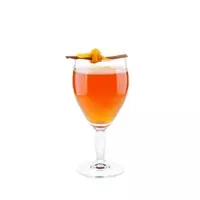Cider

Along with gin and tonic, a drink called cider confidently trampled its path into the hearts of lovers of low-alcohol drinks. It is obtained by means of non-fermentation of fruit juice, and raw materials of only certain varieties are suitable for its preparation. For example, apples or pears, which we are used to eating, are most often not used to make cider, since they contain insufficient phenolic compounds called tannin. This is a tannin substance that prevents the growth and reproduction of bacteria, so in farms it is customary to specifically grow the necessary fruits, which are used specifically for the production of cider.
This drink is especially popular in France, Germany and Spain, but it will not refuse cider in other parts of the earth. Interestingly, its name has French roots, since the first containers with this bubbling liquid first saw the light on the territory of this country. However, residents of Austria and Germany are used to calling cider in their own way - Apfelwein, for the British this drink is called British wines, and in America on the label of the bottle you can find the inscription Apple Jack.
It is noteworthy that initially cider belonged to the festive drinks of French peasants - in the Middle Ages it was made exclusively for large celebrations. But around the 18th century, this life-giving elixir with a small alcohol content gained popularity with the French nobility.
For those who find calvados too strong a drink, cider is the best alternative. It can not only be used as a good aperitif, but also used in the preparation of a variety of cocktails. Cheeses with blue mold, chocolate, melon and dessert dishes are considered the best accompaniment to cider.
Types of cider
First of all, it is worth noting that, depending on the raw materials used, such types of cider as apple (the most common), pear and many others are distinguished. That is, this drink bears its common name based on their varieties of fruits or berries that are used in its manufacture.
In addition, different countries have their own types of cider. For example, Spanish ciders are moderate in strength - this contributes to a fairly high level of consumption of this drink - fifty-four liters per person per year. It is noteworthy that this is the highest figure in European countries, which suggests that Basques and Spaniards not only drink cider, but also use it for culinary purposes. A considerable amount of desserts and sauces are prepared using this aromatic effervescent drink, which favorably shades the taste of the finished dish.
Composition of cider
It has been proven that moderate consumption of this drink not only perfectly quenches thirst, but also has a beneficial effect on the human body. This is due to the composition of cider, which contains many useful substances that are responsible for the normal operation of internal organs.
Due to the presence of certain elements in the composition of cider, it is believed that this natural drink is able to cleanse the body of poisons and other harmful substances of various origins, as well as significantly improve metabolism, thereby prolonging youth.
cider 117 kCal
Energy value of cider (Ratio of proteins, fats, carbohydrates - ju):
Proteins: 0.15 g (~ 1 kCal)
Fats: 0.27 g. (~ 2 kCal)
Carbohydrates: 28.97 g (~ 116 kCal)
Energy ratio (bj | y): 1% | 2% | 99%
 Español
Español Français
Français Português
Português Русский
Русский 简体中文
简体中文 繁體中文
繁體中文 日本語
日本語 한국어
한국어 العربية
العربية Türkçe
Türkçe Қазақ
Қазақ Deutsch
Deutsch Italiano
Italiano Українська
Українська
